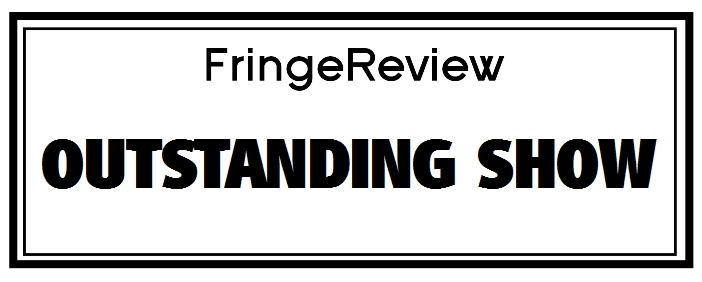Edinburgh Fringe 2023
Nearly Lear
Susanna Hamnet

Genre: Classical and Shakespeare, Clown, Comedic, Historical, Physical Theatre, Solo Play
Venue: theSpaces: Venue 45
Festival: Edinburgh Fringe
Low Down
The great and tragic story of King Lear told through the eyes of his closest companion.Susanna Hamnett plays the Fool – and every other character – to tell a very personal story and introduce Shakespeare’s famous story in a very different way.
Review
An intense, energetic, inventive and deeply moving journey through a parallel King Lear written and performed by Susanna Hamnett, directed by Edith Tankus (Shakespeare’s Globe).
The energy and fun in her approach is apparent from the moment Hamnet bounds onto the stage to the strains of Stormy Weather and a thunderclap, to introduce herself as a very Edinburgh sounding Norinne (the first of many perfectly executed accents) struggling to find work. Her father suggests applying for the advertised post of Fool at the Castle; she demurs saying they wouldn’t accept a girl; he points out she could apply in disguise as a boy. Thus we meet Norris, a Puck like figure, Fool to King Lear and Observer Extraordinaire for us, the audience.
This is Lear distilled, taken right down the central storyline of Lear’s relationship with his daughters, the conflicts with Goneril and Regan, his misguided attempt to divide his kingdom among his daughters according to the degree of love they profess for him and the journey to tragedy that follows.
The only other character from the play to make an appearance is Gloucester with an invented one, Osmond, serving to provide the self serving perspectives of several others.
The device of playing the Fool enables her to be anywhere and everywhere to watch what is going on, to react, to act as our eyes and ears. She guides us through the structure of the original play very simply by announcing which scene we are in, it doesn’t interfere with the pace, but provides a brief signpost, something many will remember when next they watch Mr Shakespeare’s King Lear.
Mostly the text is about Lear rather than the original Lear. She uses Shakespeare’s own text when Lear, Goneril, Regan and Cordelia are speaking, a sparing use of the original text that serves to highlight the poetry and power of it.
There is an unbounded enthusiasm in Hamnet’s peformance, her character Norris is passionate about this story and wants us to not only hear it but take part. Her engagement with the audience as she dispenses tissues in readiness for tragedy ‘this is going to be sad, really sad’, bringing us into the ‘worst storm in English Literature’ or encouraging to sing along, is infectious and effective.
The term ‘Tour de force’ gets very over used during August in Edinburgh but Hamment really delivers one (the first I have wanted to apply the term to this year).
Every character is clearly defined – Hamnett’s range of accents, her physicality and clown skills are second to none. There is a minimal set of three screens on wheeled frames that provide all the backdrop we are going to get, but the range of things Hamnet does sith them is extraordinary. Every twirl, move, pushing aside of the curtain, grasp of the rails serves to move the story forward. Dressed as the fool throughout in a black velvet coat, baggy trousers and battered boots there is no additional costume but we know exactly who we are looking at throughout. The only additional prop is an umbrella. The show is a masterclass for any aspiring solo Fringe performer to see just how much can be done using just voice and body.
Despite appearing to be a very light hearted take on the original play, it never makes fun or is dismissive of the difficult themes of conflict, jealousy and loss at the heart of the story. The use of the device of the Fool as observer enables Hamnet to present different perspectives on the text, something that I think will help newcomers to Shakespeare and Lear to make better sense of it.
This outstanding production seamlessly weaves poignant moments, mischievous charm, tragic depth, and hilarious wit into one strong narrative, all fueled by Hamnet’s intense and energetic inventiveness. It will stay with the audience long after they have left the theatre.


















































